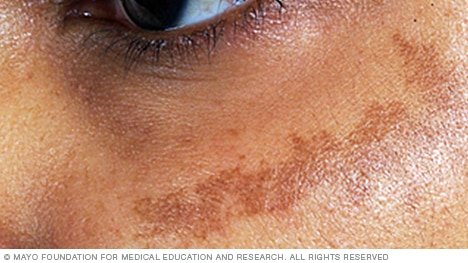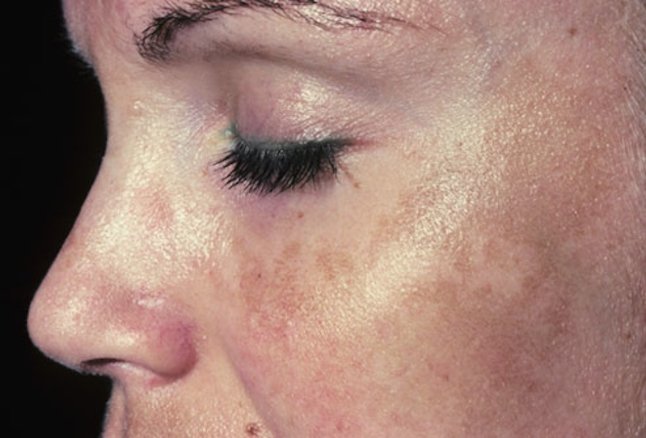Contents
- 1 Melasma Treatments in Singapore
- 2 What is Melasma?
- 3 Melasma Vs Hyper-Pigmentation: What’s the Difference?
- 4 How is Melasma Diagnosed in Singapore?
- 5 What causes Melasma in Singapore?
- 6 Can menopause cause melasma?
- 7 How do dermatologists diagnose melasma?
- 8 What are the treatments for melasma in Singapore?
- 9 How does hydroquinone treat melasma?
- 10 Are there non-hydroquinone alternative treatments for melasma?
- 11 Can Lasers remove or cure melasma?
- 12 What are the lasers for melasma in Singapore?
- 13 Melasma Treatment Results/ Before and After
- 14 Tips to prevent melasma in Singapore
- 15 How long does melasma treatment take before I can see results?
Melasma Treatments in Singapore
The first line treatment of Melasma involves using a triple combination cream, which contains Hydroquinone, tretinoin and a steroid.
Hydroquinone is a skin lightening/ whitening medicine that reduces melanin synthesis by inhibiting the enzyme involved in the process.
The tretinoin (a retinoid, or Vitamin A based cream) enhances melanin elimination by increasing cell turnover and reduces melanocytic activity.
The steroid cream, which is mild in potency reduces skin irritation caused by the former two products, and further reduces pigmentation.
This triple combination medical-grade cream improves melasma pigmentation in 60-80% of patients, and visible improvement is noticeable at 8 weeks.
Other Topical formulations thought to be beneficial may include:
- Azelaic acid
- Kojic acid
- Tranexamic acid
- Cysteamine
- Ascorbic acid (Vitamin C)

Powerful Pico Lasers for pigmentation removal have shown to be effective for melasma individuals, with fewer side effects and lesser downtime compared to ablative lasers such as CO2 laser or low energy Q-switched ND:YAG lasers.
This method of Pico Laser melasma treatment is able to damage the pigment producing cells and cause dispersion of the melanin.
We suggest a customised and holistic approach for optimal results in treating this challenging skin condition.
What is Melasma?
Melasma is a type of pigmentation that is brown to gray-brown patches, usually on the face.
Most people get melasma on their cheeks, bridge of their nose, forehead, chin, and above their upper lip.
Melasma also can appear on other parts of the body that get lots of sun, such as the forearms and neck.
Melasma Vs Hyper-Pigmentation: What’s the Difference?
Melasma is a type of hyper-pigmentation.
However, it is harder and more challenging to remove compared to other forms of pigmentation.
How is Melasma Diagnosed in Singapore?
Melasma is diagnosed based on your medical history, distribution of pigmentation and clinical examination of your skin.
It is important to differentiate melasma from other pigmented skin conditions, such as freckles and sun spots. This is because melasma might be worsened by certain treatments for freckles and sunspots (eg. Intense pulsed light).
What causes Melasma in Singapore?
Melasma is due to the overproduction of melanin (skin pigment) that can be worsened by these factors.
Common melasma triggers include:
◦ Sun exposure: Ultraviolet (UV) light from the sun stimulates the melanocytes (pigment-producing cells). In fact, just a small amount of sun exposure can make melasma return after fading.
◦ A change in hormones: Pregnant women often get melasma. When melasma appears in pregnant women, it is called chloasma, or the mask of pregnancy. Birth control pills and hormone replacement medicine also trigger melasma.
◦ Skin care products: If a cosmetic product irritates your skin, melasma can be worsened.
Women are far more likely than men to get melasma. It is so common during pregnancy that melasma is termed “the mask of pregnancy”.
Hormones are known to trigger melasma. In fact, melasma pigmented skin is significantly more common in women with up to 95% of melasma cases seen involving females, mostly occurring between the 20-40 years of age.
Can menopause cause melasma?
Yes. Studies have shown that postmenopausal women who receive progesterone hormone replacement therapy are more likely to develop melasma.
How do dermatologists diagnose melasma?
Dermatologists diagnose most patients by looking at their skin. To see how deeply the melasma penetrates the skin, your dermatologist may look at your skin under a device called a Wood’s light.
What are the treatments for melasma in Singapore?
These are the melasma treatments available:
◦ Hydroquinone: This medicine is a common first treatment for melasma. It is applied to the skin and works by lightening the skin. You will find hydroquinone in medicine that comes as a cream, lotion, gel, or liquid. You can get some of these without a prescription. These products contain less hydroquinone than a product that your dermatologist can prescribe.
◦ Tretinoin and corticosteroids: To enhance skin lightening, your dermatologist may prescribe a second medicine. This medicine may be tretinoin or a corticosteroid. Sometimes a medicine contains 3 medicines (hydroquinone, tretinoin, and a corticosteroid) in 1 cream. This is often called a triple cream.
◦ Other topical (applied to the skin) medicines: Your dermatologist may prescribe azelaic acid or kojic acid to help lighten melasma.
◦ Lasers: Lasers improve results of melasma treatments. Procedures for melasma include a chemical peel, microdermabrasion,pico laser treatment and dual yellow laser treatment.
◦ Oral tranexamic acid: this proven treatment helps to improve melasma by reducing the vascular and inflammatory component of melasma.
How does hydroquinone treat melasma?
Hydroquinone blocks a step in a specific enzymatic pathway that involves tyrosinase. Tyrosinase is the enzyme that converts dopamine to melanin pigment.
Are there non-hydroquinone alternative treatments for melasma?
Cysteamine (Cyspera) is one of the most popular non-hydroquinone creams in Singapore. The reason why Cysteamine (Cyspera) is popular is because there is less risk of causing redness and dryness. Cysteamine can also safe for long-term prolonged use.
Azelaic acid is a non-hydroquinone cream that can be used to treat melasma. Studies have reported that 15%-20% azelaic acid was very effective and safe in melasma, although the overall results are significantly less impressive than 4% hydroquinone. There are no major complications reported with azelaic acid.
Possible minor side effects include itching (pruritus), redness (erythema), scaling (dry patches), and a temporary burning sensation that tends to improve after 14-30 days of use.
Tretinoin cream (Retin A, Renova, Retin A Micro) contains a vitamin A analogue (a retinoid) that seems to have efficacy in treating melasma. Most often, tretinoin is used in combination with other creams like azelaic acid or hydroquinone. Mild localized side effects are fairly common and include peeling, dry skin, and irritation
Can Lasers remove or cure melasma?
Yes. Lasers, when used correctly, can fade melasma.
What are the lasers for melasma in Singapore?
- Pico Lasers – Pico Plus, PicoSure, Discovery Pico, Picoway
- Yellow lasers – Dual Yellow Lasers, ProYellow
- Micro-needling RF- Sylfirm
- Fractional Lasers – Fraxel Dual
Melasma Treatment Results/ Before and After
Under an expert doctor’s care, many people with melasma have a good outcome.
Melasma can be stubborn, though. It may take a few months of treatment to see improvement. It is important to follow your doctor/dermatologist’s advice. This ensures that you get the most benefit from treatment. It also can help avoid skin irritation and other side effects.
After your melasma clears, you may need to keep treating your skin. Your dermatologist may call this maintenance therapy. Maintenance therapy can prevent melasma from returning.
You can help prevent your melasma from returning by wearing sunscreen and a wide-brimmed hat every day.
Tips to prevent melasma in Singapore
1 Wear sunscreen: One of the most common treatments for melasma is sun protection. Since sunlight triggers melasma, it is important to wear sunscreen every day, even on cloudy days and after swimming or sweating.
Choose a sunscreen that offers broad-spectrum protection, a Sun Protection Factor (SPF) of 30 or more, and zinc oxide and/or titanium dioxide to physically limit the effects of the sun’s rays on your skin.
It is important to re-apply sunscreen 15 minutes before going outside and reapply at least every two hours.
2 Wear a wide-brimmed hat and sunglasses: A recent study proves that sunscreen alone may not give you the sun protection you need. Whenever possible, seek shade and wear protective clothing in addition to applying sunscreen.
3 Choose gentle skin care products: Choose skin care products that don’t sting or burn, as products that irritate the skin may worsen melasma.
How long does melasma treatment take before I can see results?
With melasma, it’s going to take at least 6-8 weeks to even start to notice any improvement if you’re using triple combination treatment with pico lasers.
Usually 25-30% improvement at week eight indicates good progress.
Frustrated with your melasma or current melasma treatments? Dr Justin Boey, Medical Director of Sozo Aesthetic Clinic shares more on why your pigmentation did not improve despite lasers.
Alternatively, enquire for a customised melasma treatment plan at Sozo Aesthetic Clinic.





